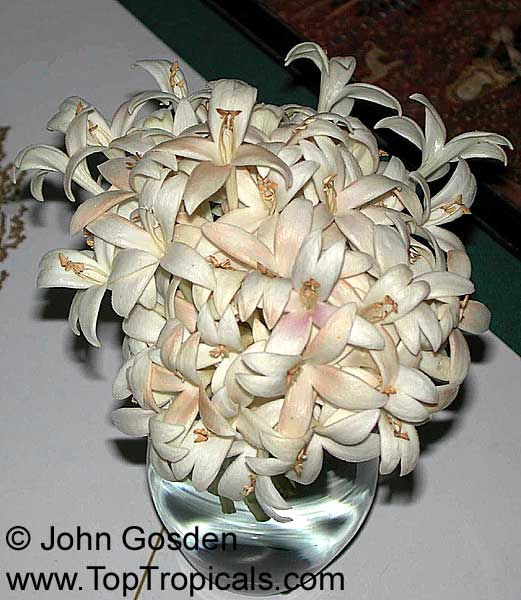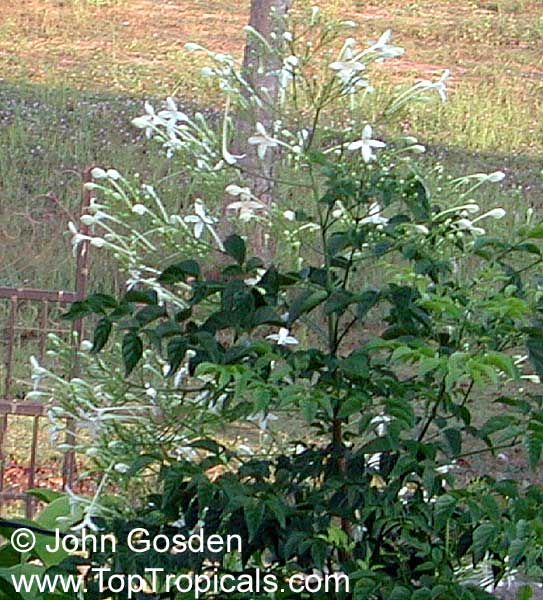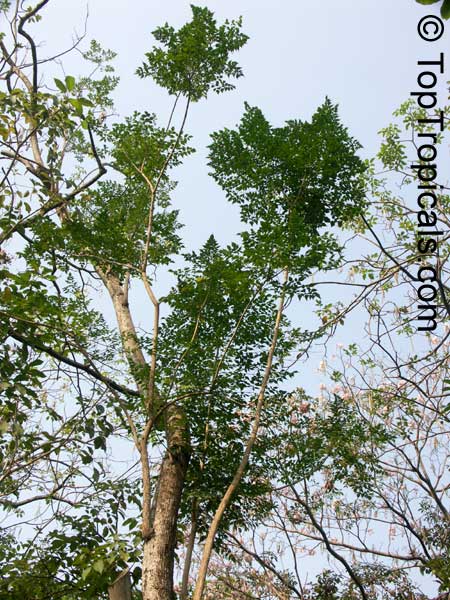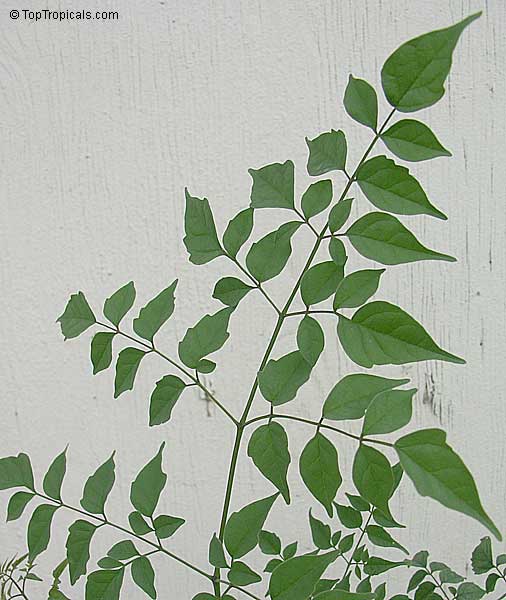MILLINGTONIA HORTENSIS - THE CORK TREE or TREE JASMINE
 Scientific name: Millingtonia
hortensis
Scientific name: Millingtonia
hortensisFamily: Bignoniaceae
Common names: Tree Jasmine, Cork Tree, Nim (Hind.) ; Karkku (Tarn.) ; Kavuki (Tel.)
Origin: Burma
The name Millingtonia honours Thomas Millington, an English botanist of the 18th Century and hortensis means "grown in gardens". The tree is indigenous to Burma and the Malay Archipelago, but now grows wild in most parts of India as well as being extensively cultivated.
The Cork tree is cultivated in most parts of India both in gardens and avenues. Tall and straight, with comparatively few branches its claim to popularity lies in its ornamental value rather than any shade-giving properties. It is a fine tree, fast growing, but with brittle wood, liable to be damaged by storms. In favourable positions it can reach 80 feet in height, but can be grown as a small compact tree if trimmed or as a nice container specimen.
The ashy bark is cracked and furrowed and the numerous fissures make removal of the cork an easy matter. It is used as an inferior substitute for true cork.
From April until the rains and again in November and December, a profusion of silvery-white, delightfully fragrant flowers crown the foliage. Upright open clusters with drooping blooms terminate every branchlet. Each flower is a tiny bell-shaped calyx, a long slender tube of palest green dividing into four waxy, white petals and several conspicuous yellow anthered stamens. One petal is longer and cleft. Many flowers are delicately tinted with rose. As they fall very soon after opening, the flower sprays consist largely of long-whitish buds, while the ground below is spangled with innumerable little stars. The tree flowers at night and sheds flowers early in the morning; fragrant blooms falling and carpeting the ground around. The flowers are used in rituals. Because of the perfume of the flowers they are very much sought after. The waxy characteristic of the flowers ensure their freshness for a long time. Extract of the leaves of Millingtonia hortensis has good antimicrobial activity. Dried flower - bronchodilator, root - lung tonic.
Between January and March the leaves are shed and renewed during April and May, although the tree is never quite naked. The long leaves bear two or three widely spaced pinnae, each with five or seven smooth leaflets, oval, pointed and slightly round-toothed. Each is from 1 to 3 inches long. Sometimes the lower pinnae are again divided and bear one pair of three leaved pinnae, one or two pairs of leaflets and one leaflet at the end.
The fruit is very long and narrow, pointed at both ends and contains thin, flat seeds. Trees do not seed very easily in India.
According to mythology, this is a heavenly tree brought to earth by the god Krishna. A quarrel over it ensued between Satyabhama and Rukmini, Krishna's wives. But Krishna planted the tree in Satyabhama's courtyard in a way that when the tree flowered, the flowers fell in Rukmini's courtyard.
Another romantic story woven around the tree is about Parijataka, a princess. She fell in love with the sun but when he deserted her she committed suicide and a tree sprung from the ashes. Unable to stand the sight of the lover who left her, the tree flowers only at night and sheds them like tear-drops before the sun rises.


